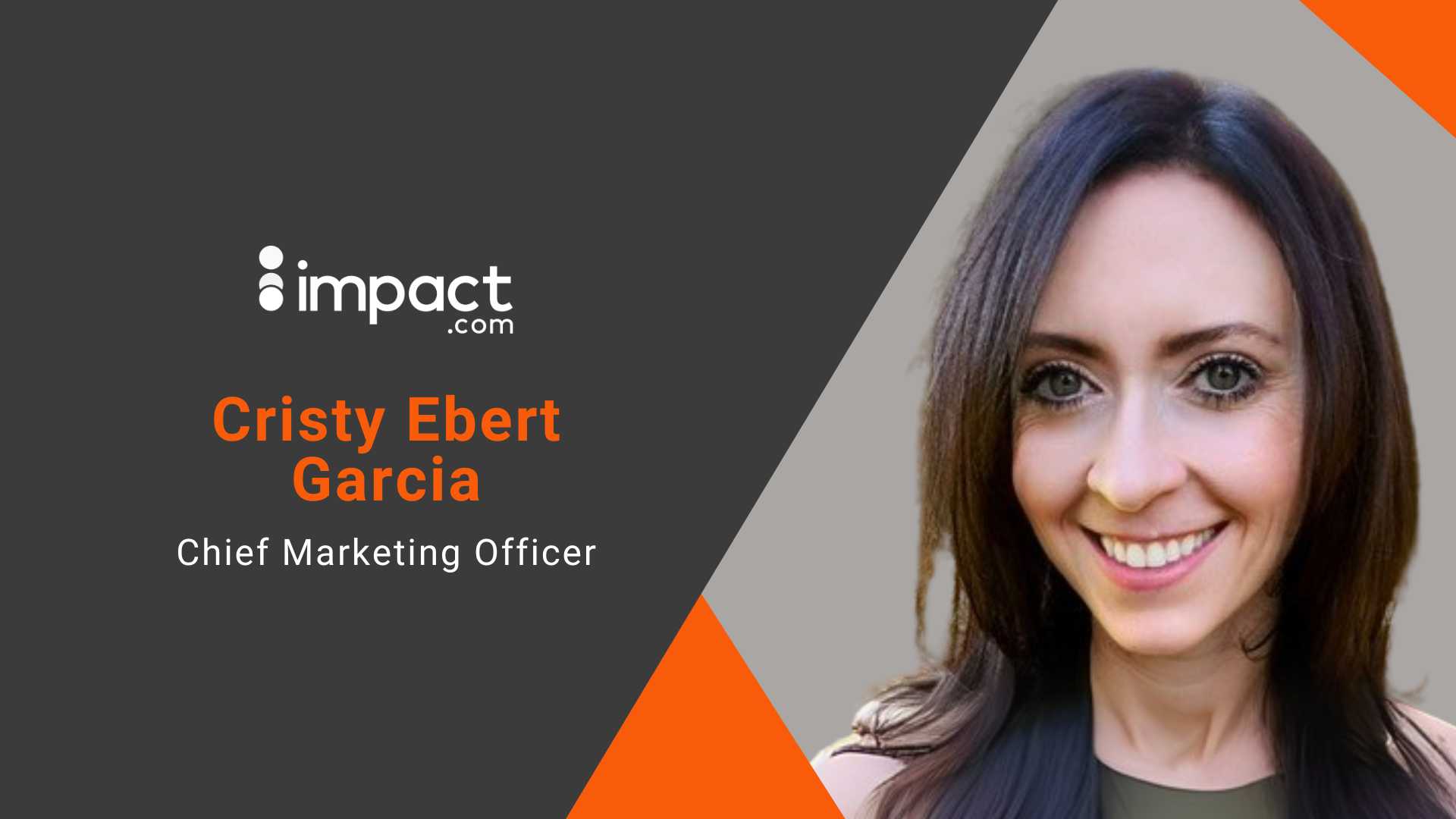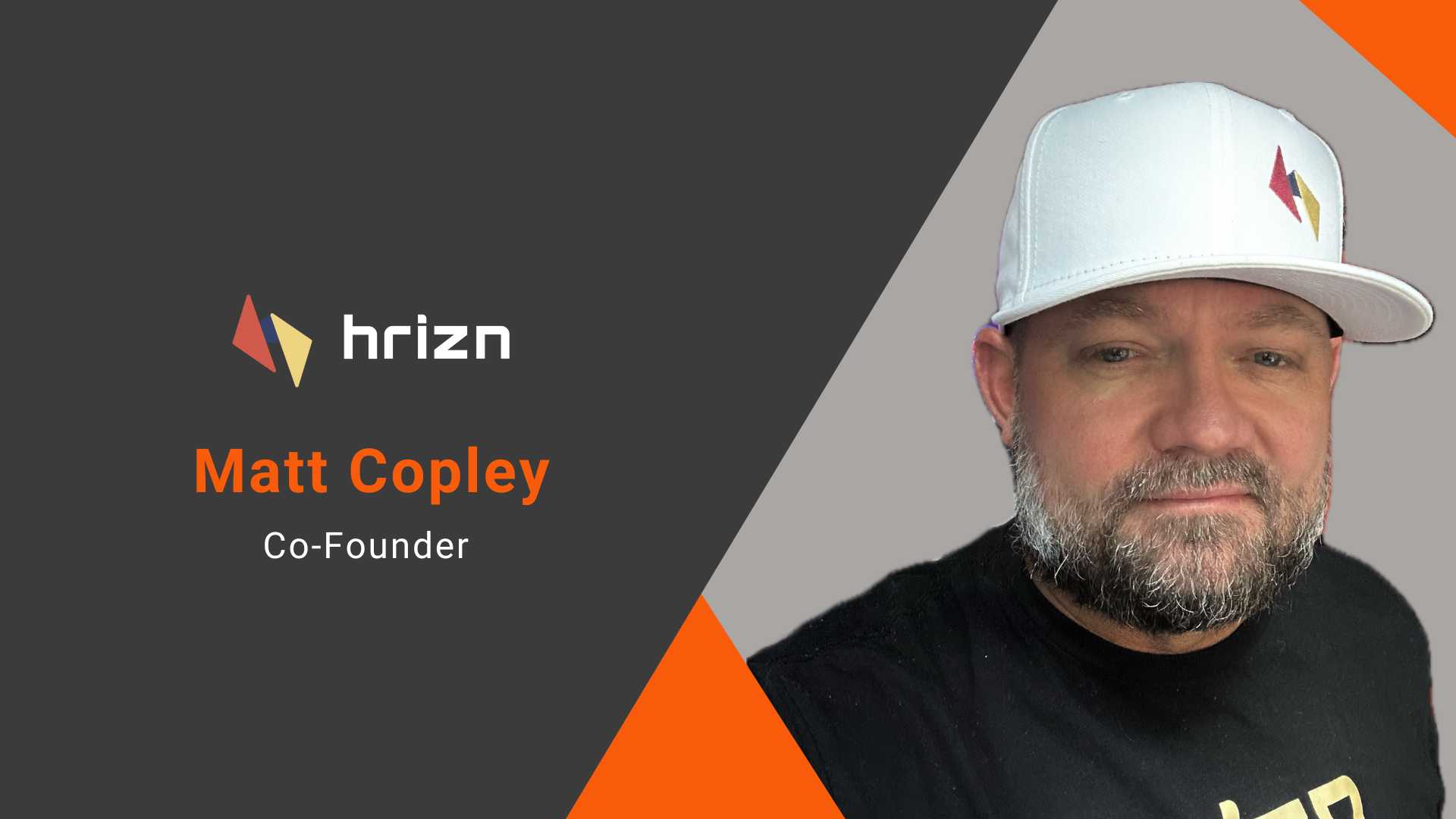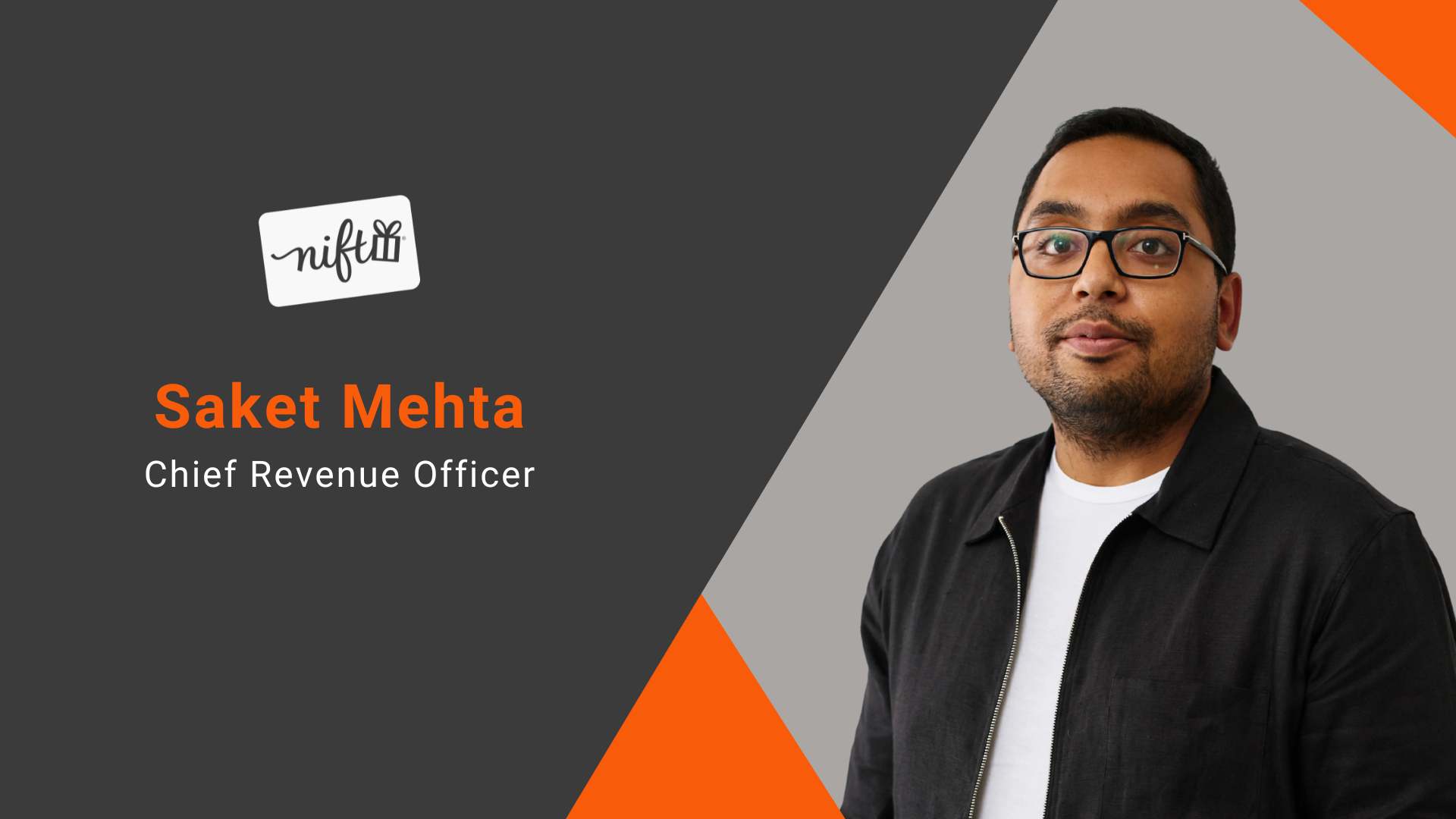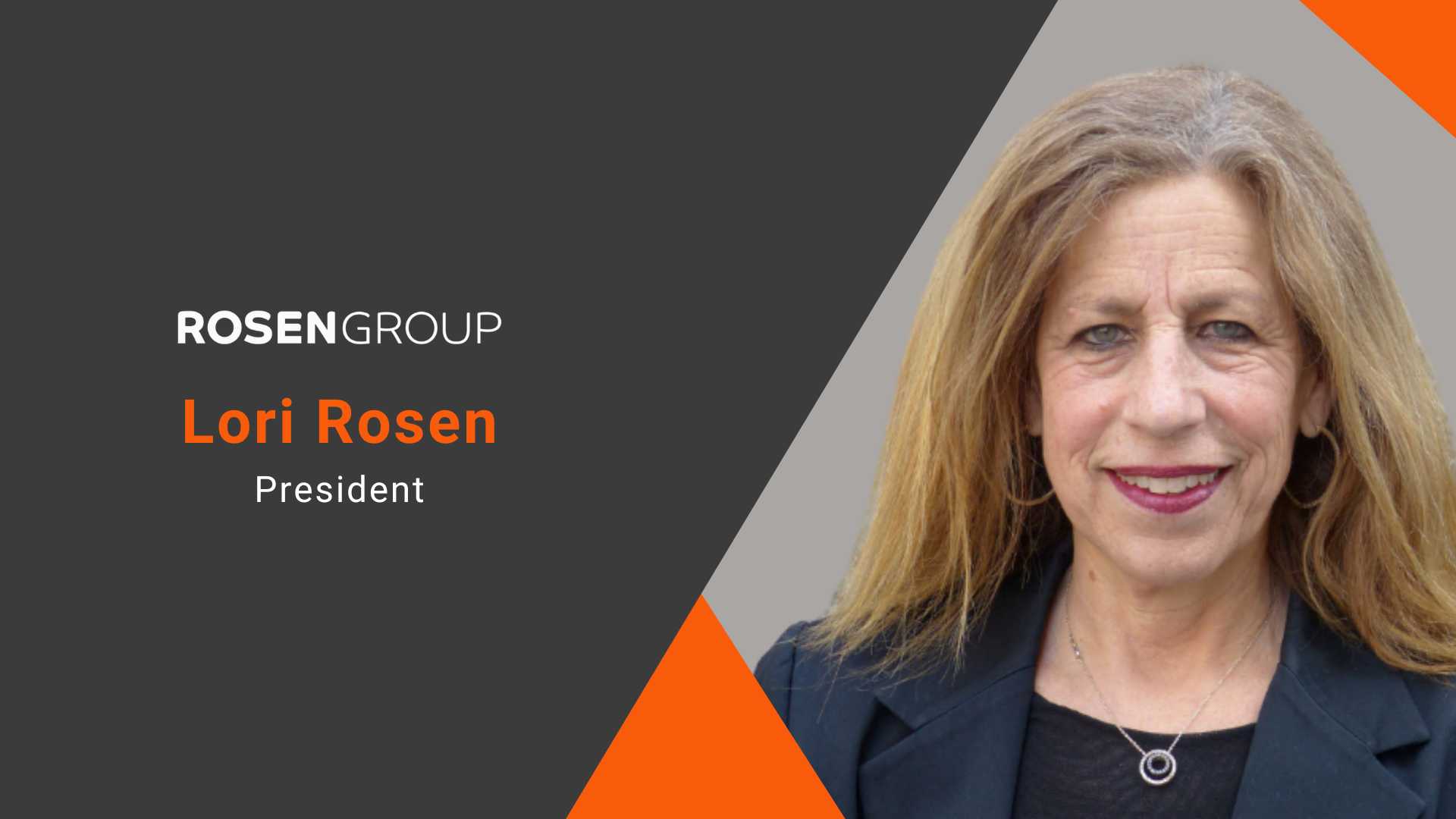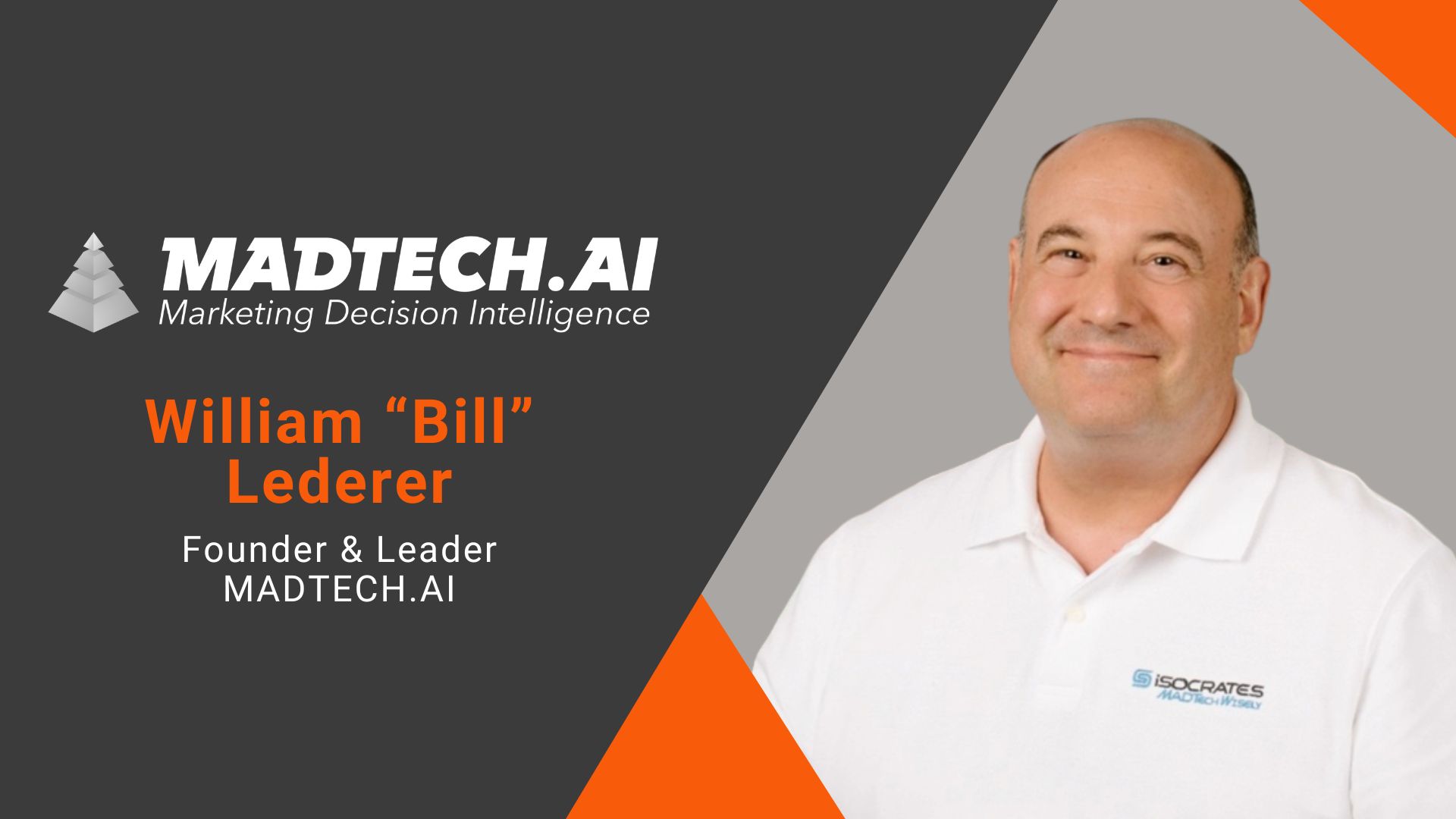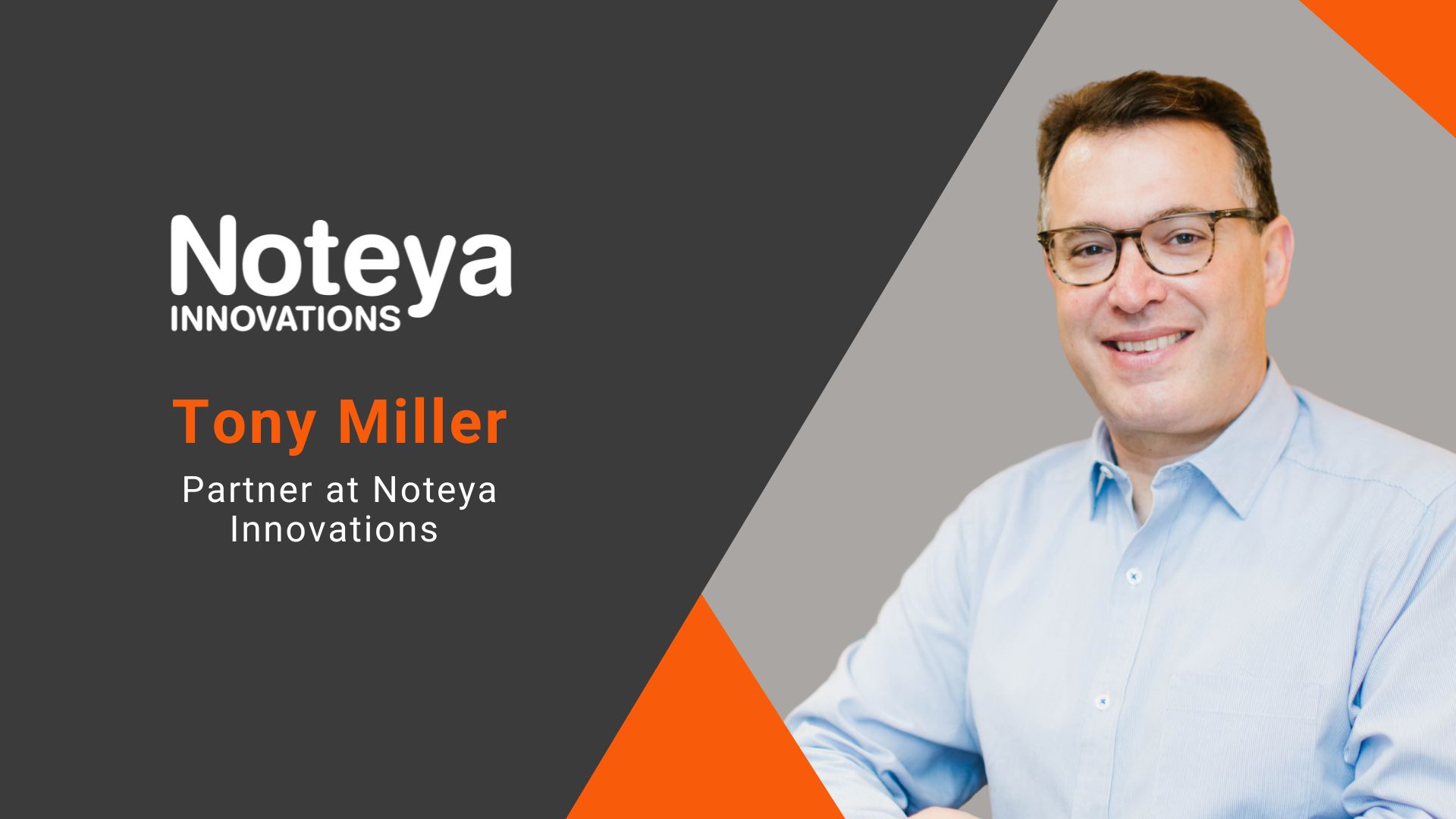
digital marketing
Beyond Black Friday: Year-Round Retail
digital marketing 2 Oct 2025
Cristy Ebert Garcia on Partnership Marketing
digital marketing 10 Sep 2025
Hrizn’s Matt Copley on AI, SEO, and the Future of Automotive Retail
digital marketing 4 Sep 2025
1. Why did you choose to focus on dealership-specific workflows and inventory-driven SEO as the core of the platform?
After decades of experience across retail automotive, technology, and media, my co-founder and I kept encountering the same gap: SEO strategies often looked good on paper, but they rarely aligned with how dealers actually operate or how customers make decisions. Agencies had structured playbooks, but most were keyword-driven, templatized for scale, and disconnected from the inventory, data, and workflows that drive real revenue on the showroom floor.
As we began building Hrizn, Google’s Helpful Content updates only made the gap more obvious. Dealers and agencies needed a platform that could consistently produce meaningful, compliant, and context-rich content, at scale… while also adapting to fast-changing search dynamics and customer expectations. But no existing tools truly supported the complexity of automotive retail. So we built one from the ground up.
Hrizn was designed to meet customers at their moment of intent with content that’s not just visible, but useful. That means content that’s directly tied to the workflows dealers and BDCs rely on every day, grounded in VIN-level inventory data, and automatically linked to helpful experiences and conversion points like live offers, service incentives, and finance approval flows.
Inventory-driven SEO isn’t just a tactic, it’s foundational. When dealerships rapidly expand authoritative, unique content across their site and product inventory, the results are exponential: better visibility, higher Quality Scores in paid media, lower cost per click, and significantly improved on-site conversion rates. It’s not about chasing rankings… it’s about creating an owned content infrastructure that fuels both organic growth and paid performance.
Ultimately, we believe SEO in automotive can’t live in the abstract. Dealers don’t sell keywords… They sell cars, service, and trust. Hrizn bridges that gap by aligning content strategy with operational reality… connecting the agency, the dealer, and the customer in a way that finally makes content a profit center, not just a checkbox.
2. How do you handle localization and brand consistency across multi-rooftop groups or agencies managing multiple clients?
Historically, localization and brand consistency have been at odds. Dealers and agencies have often had to choose between one or the other; producing generic content at scale or manually customizing every page to stay on-brand. With Hrizn, that tradeoff no longer exists. We’ve engineered a platform where localization and consistency aren’t just compatible… they're a competitive advantage.
Hrizn is built to scale intelligently across multi-rooftop dealer groups and agency portfolios. Users can define brand voice, visual language, content guardrails, and editorial standards globally… then dynamically localize content by region, demographic profile, inventory composition, dealer tone, and zip code level search intent. It’s the difference between publishing for a market and actually connecting with it.
The platform supports deep learning across internal and external linking strategies, artifact training to help our models understand nuanced concepts and positioning, and hyperlocal optimization that ensures content performs in the backyard… not just in national rankings. That means we’re not driving traffic for traffic’s sake… we’re driving the right traffic with high commercial intent.
Whether it’s preserving a consistent luxury brand tone across 10 rooftops or surfacing city-specific service content based on regional demand signals, Hrizn ensures every piece of content reflects both the brand’s identity and the customer’s local context. For agencies managing dozens,or even hundreds of clients, Hrizn’s workspace segmentation features make it easy to orchestrate complex strategies while maintaining efficiency and creative governance. For OEMs wanting high-level compliance controls and brand language application, Hrizn supports the need while allowing the agency and dealer the creative flexibility to innovate and differentiate.
On a more operational level, Hrizn empowers OEMs, agencies and in-house teams to manage both macro content strategy (campaigns, seasonality, product launches) and micro content outputs (inventory markup, geo-targeted SEO, fixed ops education) in one unified workflow. The result is faster speed to market, stronger collaboration between teams, and a content infrastructure that gets smarter and more defensible over time.
In short, we help OEMs, agencies and dealer groups break free from copy-paste content at scale and move into a new era of intelligent automation. One where every word is aligned with the brand, tuned for local intent, and engineered to drive real results.
3. How does the platform support integration with existing CMS, CRM, or CDP platforms?
Hrizn was designed from day one with interoperability at its core. We know that dealers and agencies already rely on a complex tech stack across CMS platforms, CRMs, CDPs, and DMS tools. We designed our system to complement, not complicate, those workflows.
Our content delivery layer is CMS-agnostic, supporting direct publishing and export into the most widely used automotive web platforms. Whether it’s an in-house team managing a proprietary CMS or a large agency overseeing hundreds of rooftops across multiple platforms, Hrizn integrates seamlessly into existing publishing pipelines producing not just content, but the associated html code and meta data for easy transfer to CMS and automated formatting with the website CSS for beautiful native content integration.
For CRM and CDP connections, Hrizn is actively exploring enrichment through selective data integrations, enabling content to be informed by real customer behavior, lifecycle stages, and campaign strategies. This means, for example, that fixed ops content could be dynamically adjusted based on repair order trends, seasonal demand, or customer segment data… ensuring that what’s published isn’t just SEO-optimized, but conversion-optimized as well.
Looking ahead, the upcoming release of the Hrizn API will unlock even deeper integrations with CMS, CRM, CDP, and DMS platforms. These enterprise-grade connections will be available to strategic and enterprise partners, enabling powerful use cases like:
● Automated content personalization based on lead source or buyer profile
● Dynamic campaign landing pages that align with real-time incentive pushes
● Inventory-level content customization driven by aging, pricing, or merchandising data from the DMS
Our philosophy is simple: Hrizn doesn’t seek to replace the systems dealers already depend on, it’s designed to amplify their value. By turning structured and unstructured data into on-brand, compliant, high-performance content, we help OEMs, dealers, and agencies create meaningful customer experiences that are rooted in operational reality and measurable results.
4. How is performance tracked post-publishing? Are there built-in analytics or integrations with tools like Google Analytics or SEMrush?
Performance tracking is central to Hrizn’s mission - because in this space, content without outcomes is just noise. We’ve designed our platform to provide both high-level visibility and deep technical insight, depending on the needs of the user.
Hrizn encourages every user to monitor content performance through industry-standard tools like Google Search Console, Google Analytics 4, and leading rank-tracking platforms. These validations allow dealers and agencies to measure SEO impact in the context of their broader digital strategy and make data-informed decisions across channels.
For users and teams who need more granular insight, Hrizn Analytics provides a robust technical suite purpose-built for content-driven SEO. This includes advanced Google Search Console and Google Analytics connectors, keyword rank tracking, page-level performance data, and competitive visibility tools… giving SEO and content leaders everything they need to track what’s working, surface opportunities, and iterate with confidence.
In addition to SEO and traffic data, Hrizn also provides comprehensive content creation reporting capturing productivity, publishing velocity, content type distribution, and collaboration metrics. This is especially valuable for dealer groups and agencies who need to merchandise their body of work, justify value to internal stakeholders, or assess performance across clients and rooftops.
Our philosophy is simple: content at scale is only valuable if it performs at scale. With Hrizn, every piece of content is measurable, attributable, and optimized for ongoing improvement… so teams can move fast, stay accountable, and grow smarter with every publish.
5. How do you ensure the “helpful content” standard that aligns with Google’s evolving search algorithms?
At Hrizn, “helpful content” isn’t a buzzword… it’s a foundational principle. As Google continues to evolve its Helpful Content System and strengthen its policies against spam, thin content, and AI abuse, we’ve built a platform that not only aligns with these guidelines - but anticipates them.
Every piece of content generated by Hrizn is pushed through a rigorous, multi-layered quality assurance process that includes a wide range of proprietary automated checks and validations. This system ensures that each piece of content is:
● Unique and free from plagiarism or duplication across internal and external sources
● Factually accurate, drawing from dealership data and trusted contextual sources
● Optimized for the specific content type in line with Google’s most recent guidance
● Compliant with spam and quality policies, including those targeting scaled AI content abuse
Beyond these automated checks, our system leverages retrieval-augmented generation (RAG) techniques to ground content in real dealership inputs like inventory data, backlink training, service relevance, and brand documentation reducing the risk of hallucinated or off-brand outputs from language models. Structured data and schema markup are embedded directly into the content where applicable to further signal credibility, relevance, and utility to search engines.
Additionally, Hrizn gives users the ability to review, edit, and collaborate on content before it goes live, allowing for human oversight when needed. Because we truly believe that “human plus AI” exponentially outperforms either of the two parts alone… especially for regulated or nuanced subject matter.
We built Hrizn not just to scale content, but to scale trustworthy content. That means continuously evolving alongside Google, protecting our partners from compliance risks, and ensuring the content we publish is always built to perform, and to last.
6. How do you see yourself evolving in the face of new search paradigms like AI Overviews and Search Generative Experience (SGE)?
We view the rise of AI-native search, through features like Google’s SGE and AI Overviews, not as a disruption, but as a generational opportunity. These new paradigms are prioritizing answers over links, meaning content must be structured, semantically rich, and contextually aligned with real user intent. Hrizn is uniquely built for that future.
Our platform is already grounded in the principles that AI-driven search rewards: content that’s authoritative, purposeful, and tightly mapped to high-intent queries. As SGE becomes more prominent, we’re continuing to evolve by investing heavily in zero-click optimization… generating content that’s not just rank-worthy, but reference-worthy within the AI answer layer itself.
We’re actively developing tools that help our partners create and test content designed specifically for these emerging surfaces, like snippet-optimized summaries, question-based content objects, and structured data enhancements that send strong trust signals to search engines. We’re not trying to outsmart the algorithm, we’re building the infrastructure to feed it.
The dealers and agencies that win in this new landscape will be those who own their content layer and have the ability to adapt in real time. That’s exactly what Hrizn enables. We’re not chasing trends… we’re building the connective tissue between intent, inventory, and intelligent content delivery.
SGE is just the beginning. The future of search is generative, and Hrizn is engineered to lead it.
Get in touch with our MarTech Experts.
Why Modern Brands Need a Systems-First Approach
digital marketing 5 Aug 2025
1. You have redefined yourself around a “systems-first” model. What prompted this shift, and how does it reflect the needs of modern businesses?
- Strategy sets the purpose and market direction.
- Branding expresses that vision in a way people can connect with.
- Technology builds the infrastructure to support and scale that experience.
- Growth ensures it reaches the right audience with measurable results.
- OKRs (Objectives & Key Results)
- Customer Journey Architecture
- North Star Narrative Alignment
Inside PerformLine: How AI-Driven Compliance Is Evolving in the Age of Digital Marketing
digital marketing 7 Jul 2025
1. What measures are in place to help your clients identify and mitigate risks associated with Unfair, Deceptive, or Abusive Acts or Practices (UDAAP) in their marketing materials?
UDAAP compliance is complex. For marketing and compliance leaders, UDAAP is often difficult to identify and comply with because of its very broad definition and the many federal and state regulators that enforce it.
At PerformLine, we’ve been helping our clients monitor for potential UDAAP issues for almost 20 years. Our compliance rulebooks are curated libraries of terms and phrases used to automatically flag potential marketing violations across digital channels. Think of them as the engine behind automated compliance monitoring. (Read more about our rulebooks here.)
Unlike static checklists or generic keyword libraries, our UDAAP rulebooks are dynamic, comprehensive, and built with real-world use cases in mind. With over 1 billion observations across the PerformLine platform, we’ve witnessed how marketing compliance evolves as language, tactics, and channels shift. UDAAP, in particular, remains one of the most complex regulations to monitor—broadly defined and constantly changing.
Take a phrase like “guaranteed approval” or ”risk-free.” While they may seem like strong marketing language, they can also imply deceptive outcomes under UDAAP. Each rulebook includes thousands of precisely curated terms tied to deceptive marketing tactics, consumer complaint trends, and regulatory language so organizations can spot problematic language before it impacts their customers or their credibility.
2. What challenges and opportunities are there in integrating automated compliance solutions across different marketing platforms?
One of the primary challenges lies in the variability of the marketing platforms or channels to be monitored—each with its own data structures, APIs, and content formats—which makes standardization and integration complex. At PerformLine, we've built an unmatched technology to gather, organize, and deliver high-quality compliance data from diverse and challenging sources. Our extensive web crawling and discovery technology, deep integrations with social media platforms, and ability to collect consistent email data from hundreds of thousands of inboxes represent the critical groundwork that LLMs simply can't replicate or replace. Additionally, the fast-paced nature of digital marketing, especially with AI-driven or user-generated content, adds to the difficulty of real-time oversight. Compliance standards can vary, requiring automated tools to be highly adaptable and often customized for specific regulatory expectations.
Despite these challenges, the opportunities are substantial. PerformLine’s compliance automation enables brands to scale compliance monitoring across a myriad of channels, ensuring faster detection of potential violations and enabling real-time risk mitigation. It also promotes regulatory adherence across all marketing touchpoints, while generating actionable insights that help inform marketing and compliance strategies. Ultimately, PerformLine allows organizations to shift from manual and reactive compliance to a more proactive, efficient, and integrated approach that aligns with the complexity of the digital marketing ecosystem while allowing for compliant growth.
3. How do you evaluate the effectiveness of your current compliance rulebooks in detecting and preventing potential violations across various marketing channels?
We evaluate effectiveness through a combination of quantitative metrics and continuous refinement processes. Rulebooks are designed with specificity for the client’s industry, regulatory environment, and risk tolerance. Their performance is assessed based on detection accuracy, coverage across marketing channels, and reduction in false positives and false negatives. The platform continuously monitors flagged content across marketing channels to ensure that rules are identifying compliance risks. Feedback loops from client reviewers and internal audits are used to adjust and fine-tune rule logic, ensuring alignment with evolving regulations and marketing practices. Additionally, aggregated data from across the platform provides insights into rule performance trends, allowing for proactive adjustments that keep compliance programs both effective and adaptive.
4. What is PerformLine’s approach to monitoring marketing compliance across various channels, from initial material review to monitoring across the web, email, social media, and messaging platforms?
At PerformLine, our approach to marketing compliance centers on helping teams work more efficiently without sacrificing oversight. The platform delivers a unified, omni-channel solution that supports compliance from the moment content is created through live monitoring across web, email, social media, calls, and messaging. With Document Review, marketing materials are automatically ingested, reviewed, and scored before publication, reducing tedious back-and-forth delays between marketing and compliance. Once content is live, PerformLine continuously discovers and monitors assets using a combination of AI and rule-based tech to flag potential risks—like missing disclosures, misleading claims, or unapproved language—across both owned and third-party properties. All findings are centralized in a single dashboard, giving teams full visibility and actionable insights to resolve issues quickly. By replacing disconnected tools with a streamlined process, PerformLine makes compliance seamless, scalable, and consistent across every marketing channel.
5. How do you assess the effectiveness of your compliance oversight in maintaining brand integrity and consumer trust?
Our platform enables organizations to proactively identify and remediate non-compliant or off-brand content before it reaches consumers, helping to prevent reputational damage and regulatory exposure. We track key performance indicators such as the volume and severity of violations detected, time to remediation, and the rank of partner or agent compliance over time. Additionally, we work closely with clients to align compliance oversight with their brand standards, ensuring that every consumer touchpoint reflects accurate and transparent messaging. Through ongoing rule optimization, reporting, and feedback loops, we help organizations build a culture of compliance that reinforces their brand’s credibility and earns long-term consumer confidence.
6. How do you ensure that your compliance monitoring systems are updated regularly to reflect the latest regulatory changes and emerging marketing tactics?
We combine regulatory intelligence, client collaboration, and agile technology updates to make sure our clients' compliance programs stay up-to-date. Through tech and dedicated teams, our rulebooks track changes in regulatory guidance—from agencies like the FTC, SEC, state attorneys general, and others, as well as emerging enforcement trends and industry best practices. This intelligence is used to update our rulebooks and monitoring logic, ensuring our clients stay aligned with current requirements.
We also collaborate with our clients to understand evolving marketing strategies and new campaign formats, enabling us to adapt rulebooks to cover emerging tactics like AI-generated content, influencer marketing, or short-form video. Our platform is built for flexibility, allowing for rapid deployment of rule changes and customizations, so compliance oversight evolves in lockstep with the dynamic digital marketing landscape.
7. How does PerformLine integrate AI into its platform while maintaining the transparency and control that compliance teams require?
At PerformLine, we understand the importance of balancing innovation with an organization's specific risk posture. That’s why we provide a dual approach to AI—offering both AI-based and non-AI compliance oversight systems to ensure that compliance oversight remains robust, transparent, and tailored to the organization's risk requirements.
Providing a dual system ensures that no matter where an organization is the AI adoption curve, they have the tools and support to stay compliant today and in the future.
Get in touch with our MarTech Experts.
John Lincoln on Scaling National-to-Local SEO, Smart Acquisitions & the Future of Digital Marketing | Ignite Visibility
digital marketing 30 Jun 2025
1. What investments has your company made in enhancing national-to-local digital marketing performance, particularly in local SEO and hyper-local targeting?
We’ve acquired Rallio, which connects national companies to their locations through local social media marketing, review generation and analysis, employee advocacy, industry ecosystems, and local listings. The technology is groundbreaking and fully powered by AI to get more done faster. In addition to our software Rallio, we also have playbooks for brands that ensure they target Google Business Profiles, local pages, and digital PR in a way that drives results. All of this is tied together with our national-to-local dashboards that provide a view of both national and individual locations. Furthermore, we offer enterprise sites, local landing pages, paid media, conversion rate optimization, tracking and more, all integrated with local SEO.
2. How does your organization prioritize partnerships or acquisitions to bridge gaps between marketing strategy and technical execution?
Ignite Visibility is always looking for the best solutions for our clients to deliver the most value from our platform. We currently offer enterprise websites, a full suite of digital marketing services, and our powerful software to tie it all together, Rallio. But the digital marketing world is increasingly complex, and when we don’t have a solution internally, we love working with partners who are the best at what they do. Whether that means working with a reporting solution like Looker Studio or Tap Clicks, an enterprise paid media or SEO platform, or a project management system, we are always partnering with the solution that is best for the client outcome.
3. How prepared is your technical team to implement custom solutions such as Progressive Web Apps (PWAs), advanced APIs, and automated workflows?
Our team is very prepared, especially with our recent acquisition of Outliant, a premier web development company. We are really leaning into custom solution architecture and development that meets the needs of the business’s customers. Out-of-the-box solutions do not always work for enterprise businesses. They often need their own technology, and when they have that, it sets them apart from the competition. I’ve always said the future of the internet belongs to those who can convert traffic for less. Our company understands the importance of Progressive Web Apps, advanced APIs, owning your data and automated workflows. When the solution architecture demands something custom, we are more than happy to map it from start to finish.
4. What tools or strategies have been most effective in maintaining a consistent brand experience while adapting content and campaigns to local market needs?
Brand guidelines are critical, and with our platform software Rallio, we’re able to upload those guidelines and ensure they’re followed. We see a lot of different levels of regulation with multi-location businesses that might come from the industry or individual brands.
Some companies allow their individual locations to run their own marketing campaigns while others have incredibly strict guidelines. Our company works with the business to execute the vision they have for control.
When it comes to local markets, it’s important to localize SEO content and social media content as much as possible, in addition to paid media ads. We have manual and AI solutions that can create local content at scale. It’s important to have themes built out by major markets, and then localize the content as much as possible for the best results.
5. What factors are most critical when evaluating the strategic fit of an agency or partner for digital transformation initiatives?
Over the last five years, there’s definitely been a shift toward agencies that specialize. For example, at our company, we work with enterprise brands, multi-location businesses, and franchises. We also build custom solutions for unique opportunities where we have experience.
If you’re evaluating an agency or partner, it’s important to fully understand what they’re best at and the experience they have. Generally, somebody who specializes in making TV commercials is not going to be the same person to do your local social media. Additionally, someone who specializes in SEO or paid media for one location businesses is not equipped to run an enterprise campaign.
I expect this trend to continue, resulting in agencies gaining more and more of a competitive advantage in certain niches. My advice is to find an agency that you feel comfortable with, and that will go above and beyond for you. They should understand your industry, be able to show proven results, and have unique technology and strategies that get you excited.
6. How does your leadership team assess the long-term ROI of agency acquisitions or integrations from both marketing and operational standpoints?
When it comes to acquisitions and integrations, you need to think about it a few different ways.
● Is it a partnership?
● Should we build it?
● Should we buy it?
Finding the right solution for the customer will come from one of those three areas. Of course, there’s always the option of sending business to another partner or simply saying you don’t offer that at all. But at the end of the day, the main goal is to offer the most value to your clients who utilize your platform. And that is what Ignite Visibility is, a platform that connects our customers with the best answers to their problems.
When looking at the long-term ROI of each of these items, it simply comes down to the bottom line of the business overall and the contribution margin from the acquisition, the partnership, the build initiative or saying no. All of these things have value, and many times, simply saying no to a category or opportunity can be one of the best drivers of revenue growth.
Get in touch with our MarTech Experts.
Ryan Bonnici on Scaling the Creator Economy: How Later Is Driving $1.4B in GMV with Influencer Marketing
digital marketing 18 Jun 2025
1. How does your organization use influencer marketing and social media management to drive revenue growth in the current digital landscape?
At Later, we work with brands like ESPN, L’Oréal, Adobe, and General Mills to run and scale influencer and social campaigns that drive measurable business outcomes. Our platform helps teams manage these programs end-to-end, or gives them the tools and data to run them in-house. We analyze billions of data points across social posts, creator activations, and conversions to understand what drives revenue—not just impressions or engagement. This helps brands move from experimental influencer campaigns to systematic, performance-driven programs. Internally, influencer marketing is also proving to be one of our most efficient growth channels. We’ve seen it outperform traditional paid channels and improve downstream performance when creator content is used across email, organic, and web.
2. What challenges have you encountered in adopting platforms that combine influencer campaign management, social media publishing, and analytics?
The real challenge isn’t with the platform—it’s with changing how teams operate. Marketers are used to managing influencer campaigns, publishing, and analytics across multiple disconnected tools. That patchwork has become the norm.
Adopting an integrated system streamlines the work, but it often requires teams to rethink their workflows and how they collaborate.
3. In what ways are you utilizing creator content to enhance customer engagement and build brand loyalty?
We help brands use creator content to drive deeper engagement and long-term loyalty—not just awareness. It works because it feels personal and trusted: 92% of consumers trust influencers more than traditional ads, and that jumps to 94% for Gen Z.
By integrating influencer and affiliate programs, brands can turn creators into ongoing advocates—building trust across the funnel, from discovery to repeat purchase.
4. How does your organization attribute revenue generated from social media channels to specific marketing activities?
We use cross-platform analytics to show how social and creator campaigns drive results throughout the funnel—from first touch to purchase. Since acquiring Mavely, we’ve expanded our capabilities at the bottom of the funnel, helping brands connect content to conversion with greater clarity.
As of 2024, this approach has contributed to Mavely reaching a $1.4B GMV run rate, reflecting significant growth in sales driven by creator-led campaigns.
5. What strategies are employed to ensure cross-functional collaboration in executing social revenue initiatives?
We foster collaboration by aligning teams around shared goals and performance data. From there, we connect top-of-funnel social metrics—like impressions and engagement—with bottom-of-funnel outcomes such as e-commerce sales. The key is measuring ROCS (Return on Creator Spend) and comparing it to other marketing channels. In other words, how much would we need to spend on paid social to drive the same results? Ideally, for every dollar invested in creator marketing, we generate more revenue than we would through traditional paid channels.
6. What plans are in place to stay ahead of emerging trends in the creator economy and social commerce?
Later is already built to power the creator economy end to end for both brands and creators. With the acquisition of Mavely, we’ve expanded further into performance and affiliate, enabling full-funnel, revenue-driven creator programs.
We’re also heavily investing in AI to streamline key workflows such as creator discovery, campaign setup, and performance optimization. The goal is to help brands and creators scale faster with less manual effort. We’ll have a lot more to share more with you on this soon.
Get in touch with our MarTech Experts.
Gustavo Andersson on the Future of Influencer Marketing
digital marketing 13 Jun 2025
1. How valuable is it to have curated influencer lists that include audience demographics, engagement metrics, and content samples?
Having a curated influencer lists that include audience demographics, engagement metrics, and content samples is extremely valuable in influencer marketing. It helps with precise targeting and to avoid wasted budget on influencers whose audience doesn’t match your buyer persona. Having a curated influencer list also helps with the campaign efficiency and speed as it reduces time to identify suitable influencers and streamlines outreach.
2. What are your biggest challenges when it comes to finding the right influencer partners?
The main challenge is making sure the influencer truly fits the brand not just in terms of audience size, but in how they communicate and connect with their followers. It takes time to find someone who feels like a natural match, especially when working in a very specific niche. It’s also important to find a good balance between giving influencers creative freedom and making sure the brand message is clear. Doing this well at scale can take some effort, but it’s what makes a campaign feel real and impactful.
3. To what extent does your brand prioritize influencer alignment with brand voice, values, and aesthetics?
Alignment with brand voice, values, and aesthetics is mission-critical in influencer marketing. While metrics and reach matter, alignment is what makes a partnership believable especially to the audience. Even top brands treat this as a non-negotiable filter. That's just how important influencer alignment is to every campaign.
4. What challenges have you experienced executing influencer campaigns across different regions or cultures?
One challenge would be the time zone difference. Some influencers may see your message too early or too late depending on where they're located. For platforms, that usually just means follow-ups are necessary to keep communication going. But when it comes to email outreach, we schedule messages based on the influencer’s country to ensure they receive them at the right time. This helps improve timing, boosts response rates, and keeps the campaign running smoothly.
5. How important is cultural alignment and local audience resonance when selecting influencers for global campaigns?
Cultural alignment is a key factor in global influencer success in a sense that choosing influencers who genuinely reflect the culture of their audience ensures the message is received with impact and credibility. No matter how big or popular an influencer is, without the proper audience, there's just no magic.
6. In a saturated creator economy, how critical is it to have access to fresh, vetted influencer talent pools on an ongoing basis?
Regular access to new, pre-vetted talent helps to ensure that brands can stay ahead of trends, avoid fatigue with overused influencers, and maintain authenticity by continually reaching the right audiences. Simply relying on a static list limits reach, creativity, and relevance; and the markets have a tendency to immediately notice that.
Get in touch with our MarTech Experts.
Page 1 of 2
Most Recent
BDR-as-a-Service: Driving Global B2B Sales Success
Interview Of : Dee Blohm
Weathering the Drought: Marketing Strategies to Survive a Dry Spell in Business
Interview Of : Trisha Gallagher
Lori Rosen on PR’s Evolution in the Digital Era
Interview Of : Lori Rosen, President, Rosen Group
MADTECH.AI's AI-Powered Marketing Intelligence Helps Brands Turn Fragmented Data into Competitive Advantage
Interview Of : About : William “Bill” Lederer”
An Updated Look at the Enduring Value of Press Releases
Interview Of : Tony Miller Partner at Noteya Innovations

